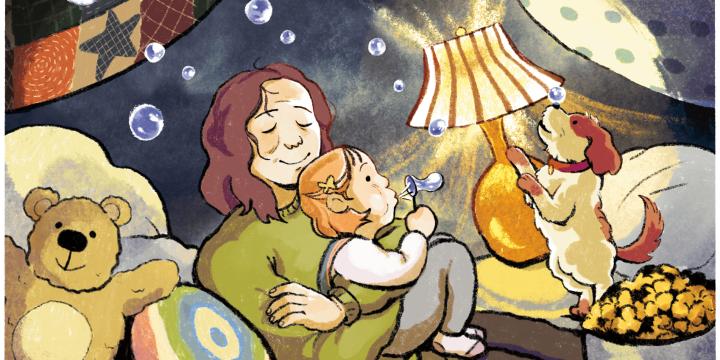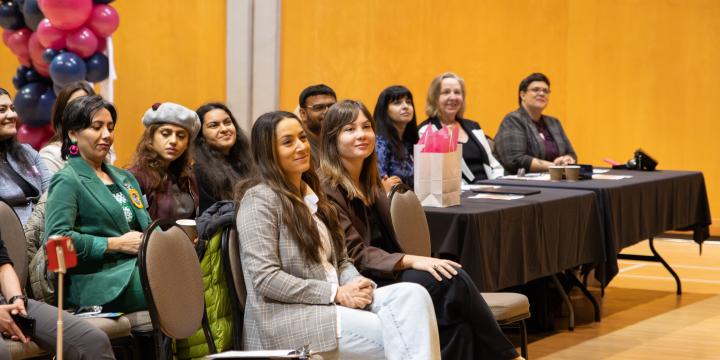
“Indigenous children, especially Indigenous girls, deserve to see themselves depicted in mainstream media without feeling shame or trauma. They deserve to see themselves in a more positive, empowering light instead of as the victim.”
Strong Indigenous matriarchs and trailblazers have contributed immensely to the fabric of our society, but how often do we learn about their stories? Tales of strength and resilience from Indigenous communities have largely been left out of mainstream media, literature and historical records, with representations often containing stereotypes and exploitative narratives.
This needs to change. Let’s take a look at history and learn about remarkable Indigenous leaders who made significant impact. We will also highlight some of the Indigenous women who are rewriting the future. As a part of YWCA Metro Vancouver’s commitment and support of meaningful action on Truth and Reconciliation, we will continue to lift up Indigenous women and make their incredible accomplishments known.
Honouring our ancestors and life givers:
Indigenous Women Rewriting the Future in BC:
Colonial structures, policies and practices such as the 1876 Indian Act disadvantaged Indigenous women by excluding them from band council government and enforcing discriminatory measures that took away Indian Status rights. These Indigenous ancestors, matriarchs and life givers made life-changing sacrifices and accomplishments despite the deep adversity and discrimination they faced. We are humbled by their resilience and have deep admiration for their incredible work and impact.
Let’s celebrate and learn from their journeys.
Angela Sidney (1902-1991)
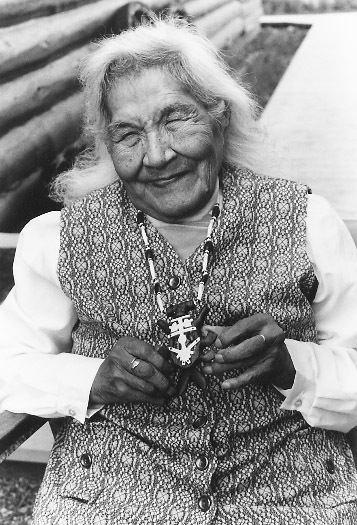
Photo credit: Windspeaker.com ARCHIVES
Tagish Elder and storyteller of the Delsheetaan nation, Angela Sidney dedicated her life to preserving the culture of her people. She was born near Carcross in 1902 and given two names at birth, Ch'óonehte' Ma (in Tagish), Stóow (in Tlingit). She was also given a third English name, Angela, by her godfather when she was two weeks old.
Worried about Tagish traditions vanishing, Mrs. Sidney spent her entire life working for her community to ensure that her people’s traditions, language, dances and stories were passed on to the next generation. She assisted linguists and anthropologists with research to keep the Tagish language alive and was involved in recording oral history and publishing books that contained songs, stories and Tagish place names. She co-authored two narratives of traditional Tagish legends and a historical document of Tagish place names for southern Yukon. She also co-founded the Yukon International Storytelling Festival.
For her tireless efforts and profound impact for future First Nations generations, Sidney became the first woman from the Yukon to receive the Order of Canada for her important work preserving Tagish language and culture in 1986.
Ga’axstal’as, Jane Constance Cook (1870–1951)
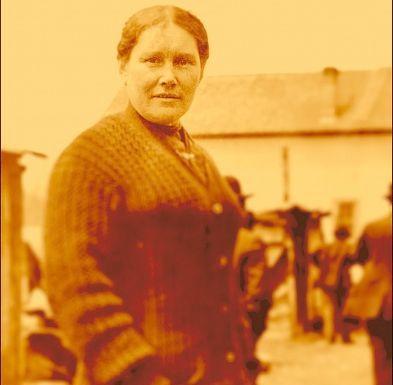
Photo credit: Royal BC Museum, BC Archives
Kwakwaka’wakw leader, cultural mediator and activist, Ga’axstal’as, Jane Constance Cook was a fierce advocate for women and children. She was born on Vancouver Island to Gwayulalas (Emily), a Kwakwaka'wakw noblewoman from Fort Rupert and Captain William Gilbert, an English trader.
Cook was bilingual, had strong literary skills and had a good understanding of colonial legal and governmental systems as well as Kwakwaka’wakw culture. Using her knowledge to fight the system for the people of Kwakwaka’wakw, she was especially celebrated for her involvement in the fight for the rights of First Nations to retain access to land and resources. This was all during a time when the grip of colonialism tightened around West Coast nations.
She testified at the McKenna-McBride Royal Commission of 1914 and was the only woman on the executive of the Allied Indian Tribes of British Columbia in 1922.
Jean Cuthand Goodwill (1928-1997)
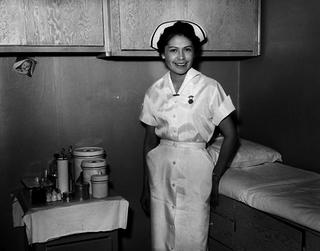
Photo credit: Provincial Archives of Saskatchewan/R-B6085
The first Indigenous person in Saskatchewan and one of the first in Canada to become a registered nurse, Jean Cuthand Goodwill paved the way for other aspiring Indigenous nurses.
Goodwill was a member of the Cree First Nations and a daughter of Cree leader John Tootoosis. She grew up on the Little Pine First Nation in Saskatchewan. Goodwill was inspired to become a nurse after spending a lot of time around hospitals and medical workers in her youth due to tuberculosis. In the earlier part of her career, Goodwill worked in rural Saskatchewan and Bermuda, focusing on helping people in need.
When she returned to Canada, Goodwill became increasingly interested in Aboriginal affairs, helping to develop an Aboriginal magazine called Tawow. She also helped found the Aboriginal Nurses Association of Canada and served as its president from 1983 to 1990. She was the first Aboriginal woman to serve as "special advisor" to the minister of National Health and Welfare in the Canadian federal government; she also worked with the Department of Indian Affairs and Northern Development.
Kenojuak Ashevak (1927-2013)
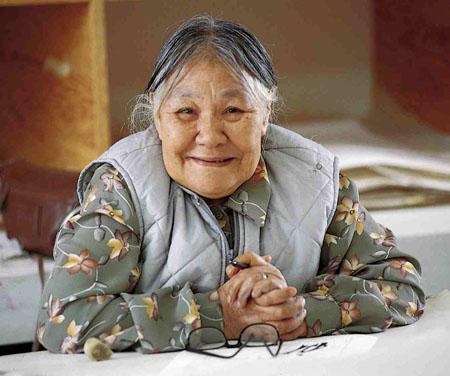
Photo credit: Ansgar Walk
Born on the southern coast of Baffin Island Kenojuak Ashevak is considered by many to be one of Canada’s most acclaimed graphic artists and the most renowned Inuit artist. Ashevak became one of the first Inuit women from Cape Dorset to draw, and later travelled all over the world as an ambassador for Inuit art.
Ashevak created some of the most iconic and instantly recognizable images in Canadian art. She created thousands of drawings, etchings, stonecut prints and prints — all sought after by museums and collectors. While she worked in sculpture, Ashevak is best known for her entrancing graphic works including drawings and prints. Her early drawings had simple, bold forms, often featuring birds and creatures metamorphosing into one another, later Ashevak’s art evolved and became more complicated and stylized. Her iconic The Enchanted Owl (1960) was used on a postage stamp in the 1970s to commemorate the centennial of the Northwest Territories.
Ashevak received many special honours over the years. She was elected a member of the Royal Academy of Arts in 1974, appointed a Companion of the Order of Canada in 1982, received honorary doctorates from Queen’s University and the University of Toronto and was inducted into Canada’s Walk of Fame in 2001. Ashevak’s enthusiasm and devotion to her work has provided inspiration to generations of artists in Kinngait. She is the namesake of the community’s Kenojuak Cultural Centre and Print Shop, which opened in 2017 and houses the contemporary art studios.
Mary Two-Axe Earley (1911-1996)
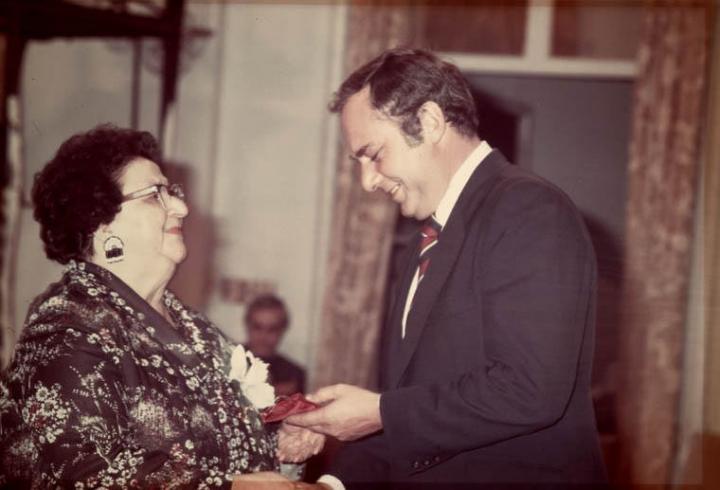
Photo credit: BiblioArchives/LibraryArchives
A Mohawk woman born on the Kahnawake reserve, Mary Two-Axe Earley spent many years challenging the injustices of the Indian Act. Because she married a non-Indigenous man, Two-Axe Earley lost her Indian status and could no longer live on her home reserve or participate in the life of her community.
Two-Axe Earley began advocating for the rights of Indigenous women and for changes to the Indian Act, most notably an amendment which revoked land and treaty rights for Status women who married non-Indigenous men. She became especially active after 1966, believing that the stress of being denied property rights was a component that led to her Mohawk clan sister’s death from a heart attack. And in 1968 she established the Equal Rights for Indian Women association, a provincial organization that fought for these changes.
Her campaigning and advocacy work continued for years, and in 1985, Bill C-31 amended the Indian Act and allowed for the reinstatement for some women who had lost their status. Two-Axe Earley was the first woman to regain her Indian status in a ceremony with David Crombie, the Minister for Indian Affairs and Northern Development, in 1985. Her lobbying efforts helped 16,000 women and 46,000 first-generation descendants, according to Canada’s History.
Nahnebahwequay, Catherine Sutton (1824-1865)
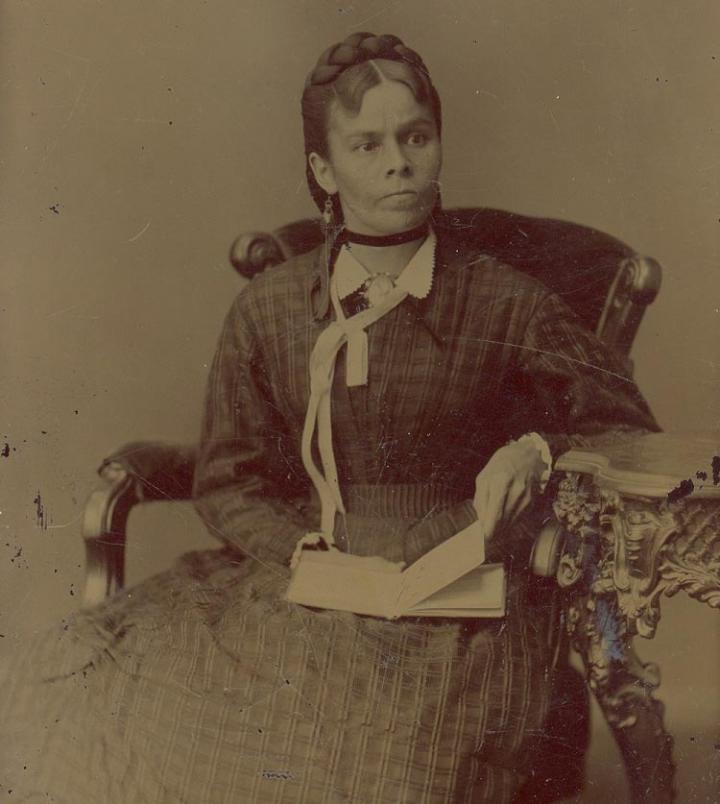
Photo credit: The Grey Roots Archival Collection
Nahnebahwequay was a Mississauga activist, Christian missionary and spokesperson for Ojibwa people who fought against colonial policies that prevented First Nations people from purchasing their own ceded land. During her youth, she travelled to England with Kahkewaquonaby (also known as Reverend Peter Jones), who petitioned the Crown for First Nations land rights. This trip influenced her later advocacy.
During a time when the cultural, political and economic rights of Indigenous peoples in Canada were formally eroded by policies that pushed for assimilation, Nahnebahwequay was as an advocate for her people. Her lifelong leadership and activism were even more impressive as she had to face additional legal restrictions colonial governments placed on Indigenous women.
She advised her community of their political and legal rights, spoke in public lectures and created written documentation of her people’s grievances and struggles at the hands of the government. She petitioned the British Crown, travelled to England and presented her case to Queen Victoria on June 19, 1860, declaring that Indigenous peoples had the right to legally own their land. Upon her return, she continued to be a voice against colonial land policies, and pushed back against additional legal restrictions placed on Indigenous women.
Nahnebahwequay (1824-1865) was designated a national historic person in April 2021.
Nora Bernard (1935-2007)
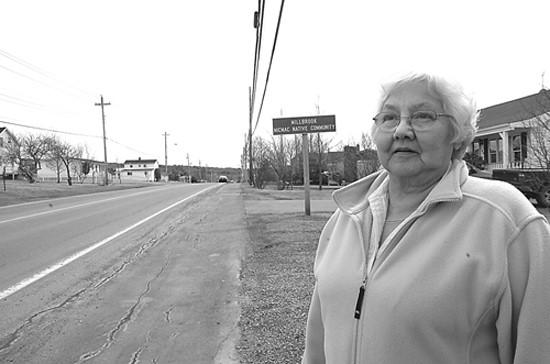
Photo credit: Windspeaker.com ARCHIVES
Nora Bernard was a Mi’kmaq activist who fought for compensation for residential school survivors. As a child, Bernard spent five years in the Shubenacadie Indian Residential School. In the school, Bernard defended her siblings and other children who were mistreated, and was often beaten for her efforts.
In 1995, Bernard founded an organization that represented survivors of Shubenacadie. Their class action suit soon became known across the country and other groups and associations joined them, forming one national lawsuit that became the largest class-action lawsuit in Canadian history. She was directly responsible for representing an estimated 79,000 survivors. It took Nora twelve years to achieve her goal. It was not an easy fight and her role representing survivors often took a toll on her health. The Canadian government settled the lawsuit in 2005 for upwards of 5 billion dollars.
Bernard wasn’t able to see the outcome of all of her hard work. She died tragically in 2007, not long after thousands of survivors were to be sent compensation cheques.
Tekahionwake, Emily Pauline Johnson (1861–1913)
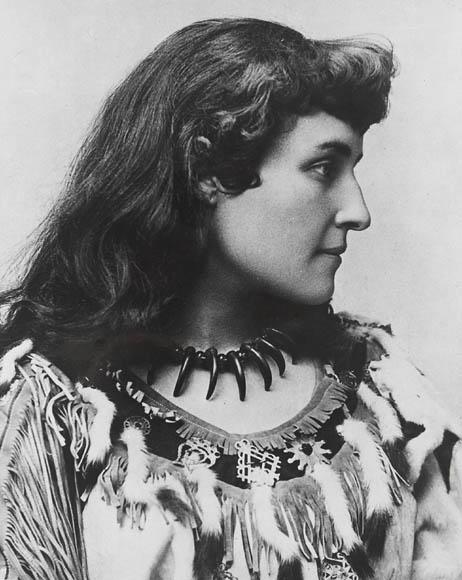
Photo credit: Library and Archives Canada/National Film Board fonds/e011177518)
Emily Pauline Johnson, also known by her Mohawk stage name Tekahionwake, was a remarkable Canadian poet, author, performer and key literary figure who has made an indelible mark on Indigenous women's writing and performance as a whole.
Johnson’s father was a hereditary Mohawk chief of mixed ancestry and her mother was an English immigrant. She was notable for her poems, short stories and performances that celebrated her mixed-race heritage, drawing from both Indigenous and English influences. Johnson made important contributions to Indigenous and Canadian oral and written culture, including writing the “Legends of Vancouver”, where these stories were captured in English for the first time. As an unmarried Indigenous woman and a successful poet and entertainer, Johnson also fought against prejudicial ideas of race and gender at the time.
Since the late 20th century there has been a renewed interest in her life and works. In 2002, a complete collection of her known poetry was published, entitled E. Pauline Johnson, Tekahionwake: Collected Poems and Selected Prose. The Women’s Press Club in Vancouver established a monument to commemorate Johnson's work and legacy in Stanley Park. In 2016, she was one of 12 Canadian women in consideration to appear on a banknote. Her influence continues to this day.
Thanadelthur (1697-1717)
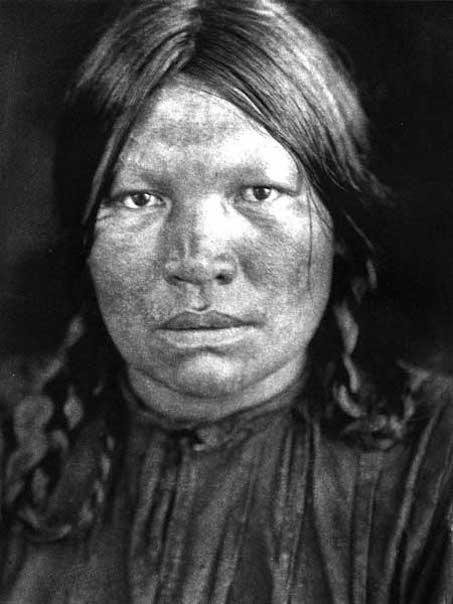
Photo credit: Edward S. Curtis / Library And Archives Canada
Thanadelthur was a member of the Chipewyan (Dene) nation. She was an incredibly brave peacemaker, guide and interpreter for the Hudson’s Bay Company who negotiated a peace between the Cree and Chipewyan tribes which paved the way for the establishment of a fort at the mouth of the Churchill River.
She was captured by the Cree in 1713 and enslaved, but escaped to try to find her way back to the Chipewyan. She eventually came across the HBC York Factory post, governed by James Knight. Thanadelthur stayed to work for Knight, who needed a translator to help make peace between the Cree and the Chipewyan for trading purposes. She brought the two groups together after much effort and brought about a peace agreement.
Despite her incredible accomplishmentsand key role in brokering peace, very little is written about Thanadelthur from her perspective, and the HBC records refer to her using deeply racist and colonial terms such as “Slave woman” or “Slave woman Joan”.
Thelma Julia Chalifoux (1929-2017)
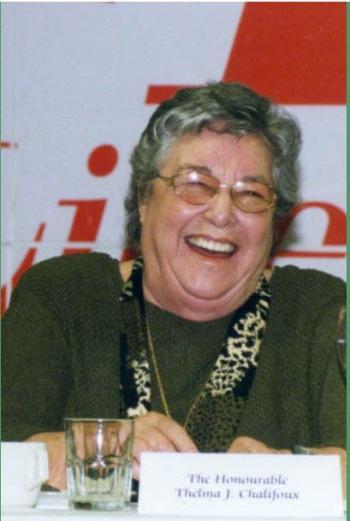
Photo credit: Windspeaker.com ARCHIVES 1998
Born in 1929, Thelma Chalifoux was a Métis, an entrepreneur and was the first Indigenous woman and the first Métis person to be appointed to the Canadian Senate. Chalifoux married at a young age, but her four children were taken away from her in 1958 as part of the Sixties Scoop. She fought to get her children back while working two jobs and finishing high school and successfully got her children back in 1965.
In the late 1960s, she was recruited by the Edmonton office of the Métis Association of Alberta after staff spotted her drive and talent and offered her a job as a fieldworker. She was responsible for setting up the association's welfare and land departments, co-founded the Native Friendship Centre and ran the first shelter for women fleeing domestic violence. She also served in the Company of Young Canadians, working on Indigenous housing and community development and hosted a weekly radio show.
In the early 1980s, Chalifoux was part of a Métis delegation in constitutional talks with Prime Minister Pierre Trudeau, working for recognition of First Nations, Inuit, and Métis peoples as separate and distinct nations. In 1997, Prime Minister Jean Chrétien appointed her to the Senate, where she focused on issues including Métis housing and the environment and relations between pharmaceutical companies and the government. After she retired from the Senate in 2004, she founded the Michif Cultural Institute, now the Michif Cultural Connections, a museum and resource centre dedicated to preserving and promoting Métis culture. She died on September 22, 2017.
These trailblazers are leading the way for future generations, despite the uphill battles they have faced as Indigenous women. Their successes and achievements are hard earned as they lead their communities to heal the wounds of colonization, while grappling with the issues of residential schools, missing and murdered Indigenous women and girls, abuse and violence, and the overdose crisis in BC.
Today and every day, join us in celebrating their accomplishments.
Angela Sterritt
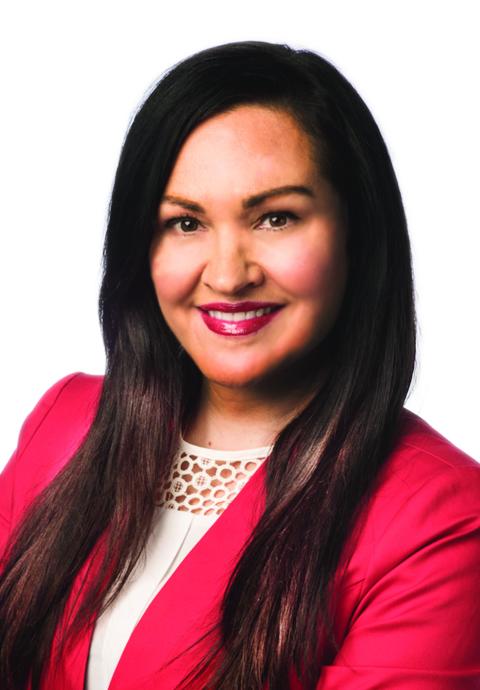
Angela is an award-winning journalist, author and artist who works diligently to break stereotypes about Indigenous people and is committed to presenting an accurate portrayal of their experience.
Angela is from the Gitanmaax community of the Gitxsan Nation on her dad’s side and from Bell Island, Newfoundland on her maternal side. One of the few Indigenous journalists in BC, Angela has covered critical stories such as ones on missing and murdered Indigenous women, the human rights of Indigenous people and Indigenous child welfare through her vision and storytelling lens. In 2018, Angela launched her “Reconcile This” column on radio, television and online, which led to multiple policy changes within the BC government, a Canadian bank and other institutions.
Angela was the first Indigenous person to win the William Southam Journalism Fellow at Massey College, a first in the school’s 60-year history in 2015. In 2021, Sterritt won an Academy award (Canadian Screen Award) for best reporter of the year in Canada for her coverage of an Indigenous man and his then 12-year-old granddaughter who were arrested while trying to open a bank account at BMO. Sterritt also won a national Radio Television Digital News Association award for the same reporting. In 2020, Sterritt was named in Vancouver Magazine’s Power 50 list of the city’s most influential people. These are only several of her many accolades.
Her book Unbroken, a work that is part memoir and part investigation into the murders and disappearances of Indigenous women will be published on September 27, 2022 by Greystone Books.
Chastity Davis
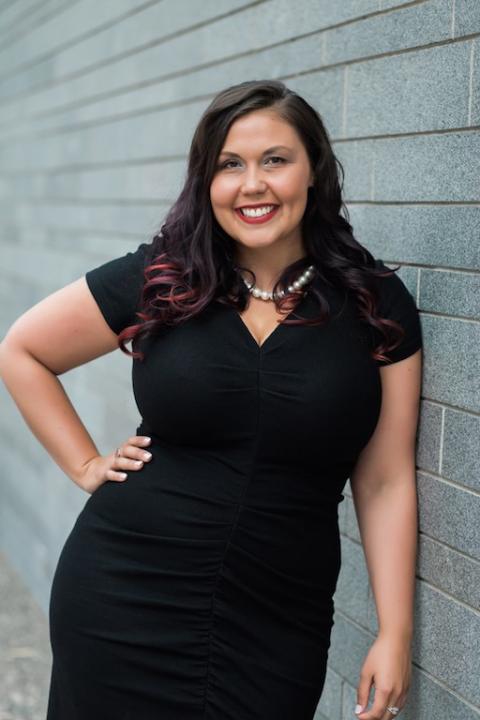
Photo credit: provided by Chastity Davis
Chastity, a mixed-heritage woman of First Nations and European descent, created an online Indigenous Cultural Awareness program that shares Canadian history through the lens of Indigenous women who share insight and stories. Chastity created the Indigenous Gender-Based Analysis Tool-kit through her role as Chair Minister’s Advisory Council on Indigenous Women, to measure the impacts of resource development on Indigenous women, girls and gender-diverse individuals in relation to Impact Assessment.
In the spirit of us moving forward together, Chastity created the Professional Aboriginal Women’s Network in partnership with the Professional Women’s Network, which has hosted more than 20 speaking and networking events for Indigenous and non-Indigenous women to connect.
She is also the Principal and Lead Consultant of Chastity Davis Consulting, working to develop Cultural Awareness/Reconciliation programs to foster understanding of Indigenous Peoples' history.
Jeska Slater
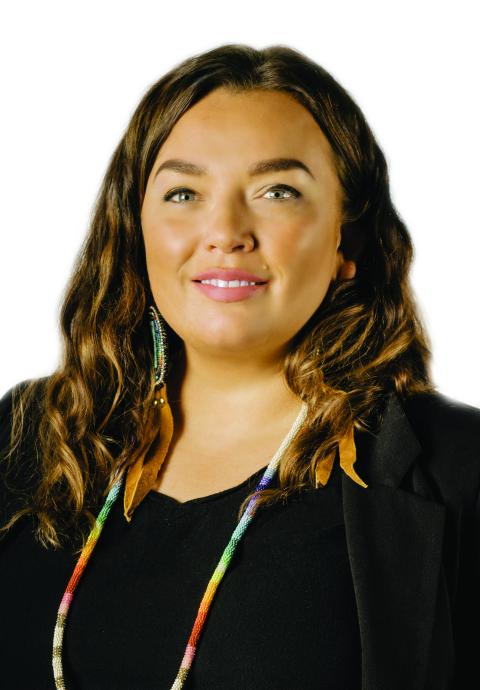
Jeska is a mixed blood Nehiyah iskwew (Cree woman) and an innovator, educator, visual artist and traditional beadwork artist. She has been working in Indigenous communities for over ten years and is currently the Director of Indigenous Priorities at Vancouver Foundation
Jeska’s leadership in reconciliation is embedded in her work at various boards and advisory councils, including Surrey Indigenous Youth Advisory Council, as well as her previous role at City of Surrey’s Skookum Lab, which was created to honour the strength and wisdom of Indigenous communities. She also founded TransformNations, whose goal is to provide opportunities for youth to gain leadership skills and be compensated well for meaningful community work. TransformNations workshops focus on decolonization, cultural competency, anti-oppression training and Indigenous art and culture.
Her artistic work also combines traditional teachings and value systems with contemporary art like hip-hop, graffiti and other unique elements to engage folx of all ages. Jeska wishes to honour her ancestry by highlighting the concept of Intergenerational Resilience, or the passing down of gifts, culture and personal strengths through our bloodlines in order to empower Indigenous youth and families.
Gul Kiit Jaad
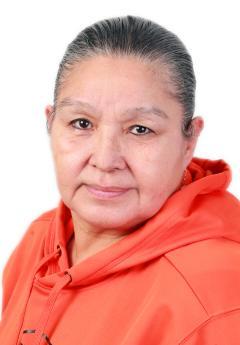
Gul Kiit Jaad, Golden Spruce Woman from Old Massett Village, Haida Gwaii, is Indigenous Cultural Liaison at Rain City Housing and Support Society. She is a proud two-spirited Haida woman.
Gul Kiit Jaad co-founded Walk4Justice by walking from Prince Rupert to Prince George along the Highway of Tears, which led to several walks from Vancouver to Ottawa, that brought national attention to the Missing and Murdered Indigenous Women and Girls. Gul Kiit Jaad also co-founded the Women’s Memorial March to honour the lives of missing and murdered Indigenous women. She dedicates much of her time supporting vulnerable people in the Downtown Eastside, empowering them through Indigenous teachings and art.
Gul Kiit Jaad was also the first woman to apprentice under world-renowned Haida artist, Bill Reid, and she carved the Survivors Totem Pole, unveiled at Pigeon Park in 2016.
Isabel Jackson
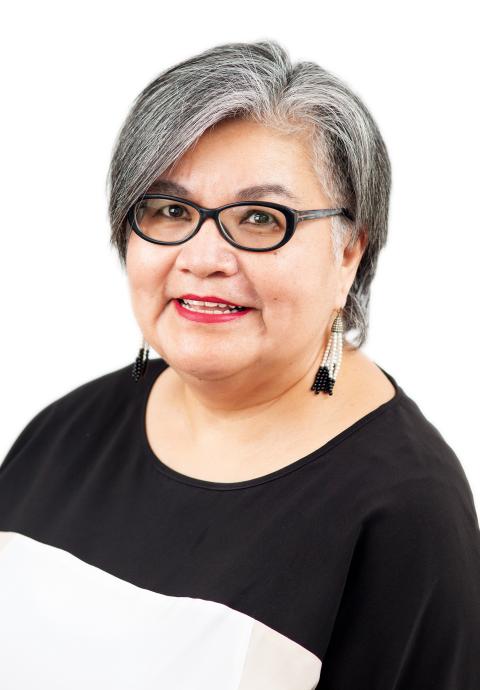
Isabel, a Gitxsan Lawyer in the Aboriginal Law section of the Department of Justice Canada, BC Region, provides legal services to Crown-Indigenous Relations and Northern Affairs Canada and Indigenous Services Canada.
Isabel co-founded the Aboriginal Lawyers Forum (ALF) of the Canadian Bar Association (CBA) BC for Indigenous law students and lawyers (and their allies) to network and engage in professional development and mentorship. ALF was the first of its kind nationally, making the legal community more welcoming to Indigenous lawyers. As ALF Chair, Isabel sat on the CBA’s BC’s Truth & Reconciliation Committee. She has helped the ALF raise more than $100,000 in scholarships for Indigenous law students.
Isabel became a role model in facilitating Aboriginal Awareness presentations throughout the federal public service and participating in the resolution of on Indian Residential Schools claims.
Joleen Mitton
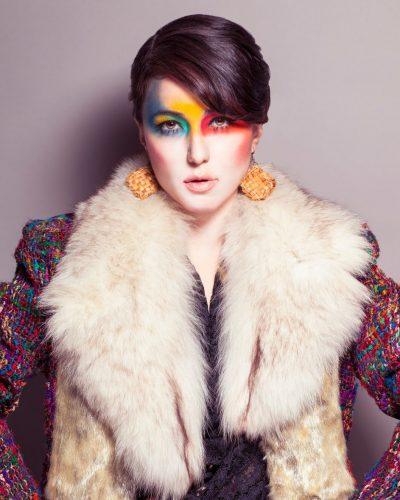
Photo credit: from Vancouver Indigenous Fashion Week website
Joleen Mitton is proud of her Plains Cree, French, Scottish heritage. Born and bred in East Vancouver, BC, she spent 19 years traveling the world and working as a professional model. Joleen is the founder of the Vancouver Indigenous Fashion Week, Co-founder of Supernaturals Modeling, AMR Basketball Team and a model whose career landed her spots in campaigns for the likes of Kenzo, Clinique, Vivienne Westwood, Hello Kitty paraphernalia and on countless runways. Now residing back in Vancouver, she’s dedicated to working with Indigenous communities, connecting communities through art, fashion and understanding.
Joleen also runs her own company, All My Relations Entertainment. Her goal is to uplift urban Indigenous communities and emerging Indigenous talent through skills development, employment, and healing.
Through producing Aboriginal fashion shows and basketball tournaments across the city, Joleen has succeeded in raising awareness for local Indigenous fashion and the Native basketball community.
Karen Joseph
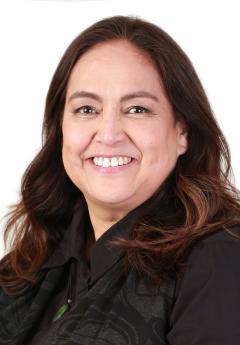
CEO and Co-Founder of Reconciliation Canada - A New Way Forward Society, Karen is a Musgamagw Dzawada’enuxw visionary, whose leadership has significantly shaped reconciliation in Canada. Her efforts contributed to the City of Vancouver designating 2013-14 a Year of Reconciliation and becoming a City of Reconciliation.
Karen recently began actioning the Indigenous Women’s Leadership - Resilience, Reconciliation and Shared Prosperity program, which honours the Indigenous worldview and seeks to re-establish the role of matriarchs in our communities and economies.
Karen has overseen Reconciliation Walks, Reconciliation Dialogue Workshops and online gatherings to honour the unearthing of children at former residential schools. She has played a vital role in her community since she was 13 years old, assuming the responsibilities and duties of a Matriarch in her nation.
Lynda Gray
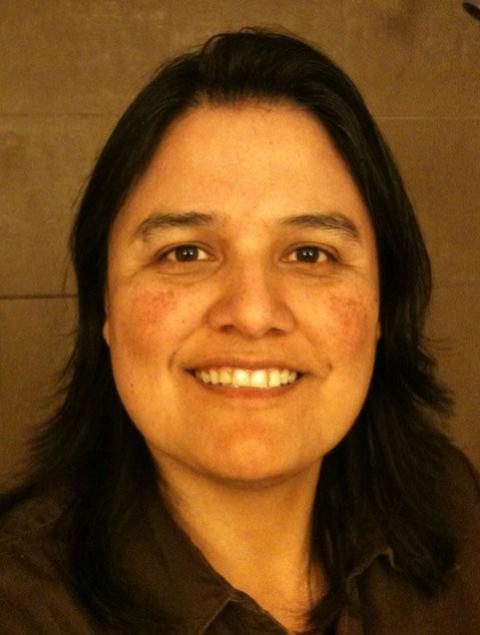
Photo credit: from Bowen Island Current, submitted to Lynda Gray
Lynda Gray is a member of the Ts'msyen (Tsimshian) Nation from Lax Kw’alaams on B.C.’s northwest coast. She was born in Prince Rupert, but has lived in East Vancouver since she was six months old.
Feeling that there was an immense need to foster a greater understanding of Indigenous people and culture across present-day Canada, in 2011, she wrote the book “First Nations 101” which was one of few sources of information focused on the vast range of issues affecting Indigenous communities from coast to coast to coast geared to both Indigenous and non-Indigenous readers. First Nations 101 provides an accessible, comprehensive and up-to-date overview of Canada’s true history and looks at the lasting impacts of colonization and residential schools, touching on so many urgent issues affecting Indigenous people and communities today. Much has happened since the launch of the book, and yet there remains a widespread lack of public and private response to so many pressing issues.
Gray is an active member of the First Nations community. Her work is grounded in a strong belief in community development, youth empowerment and culture as therapy. She is the Executive Director of the Urban Native Youth Association (UNYA), and serves on many community Boards and Committees.
Margo Kane
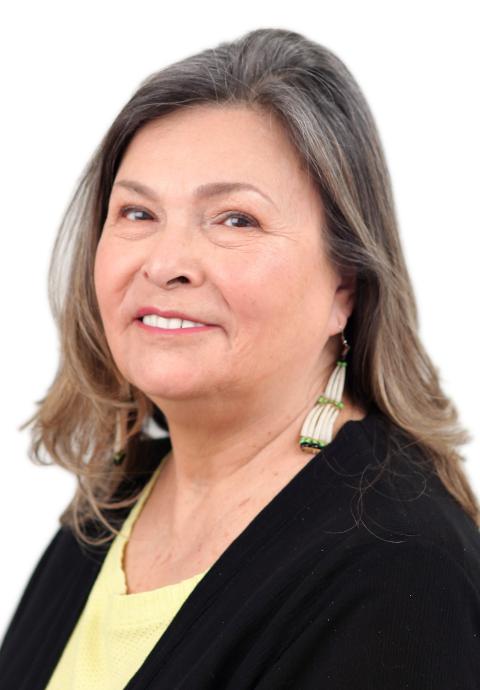
Margo (Cree-Saulteaux) is Artistic Managing Director of Full Circle: First Nations Performance and an internationally recognized performer, creator, mentor, director and community leader. Her desire to share artistic performance that has meaning for her people is the catalyst for her extensive work, travels and consultation within Indigenous communities across Canada and abroad. She purposefully builds bridges with other IBPOC circles and settler communities.
Margo has also founded and co-founded other vital institutions and events including the Indigenous Performing Arts Alliance and The Talking Stick Festival, which is celebrating its 20th anniversary year. Margo toured her award-winning one-person show Moonlodge to global acclaim for more than ten years.
She has created countless and diverse opportunities for Indigenous artists and community to gather, activate and galvanize around their artistic sovereignty and self-determination.
The Honourable Marion Buller
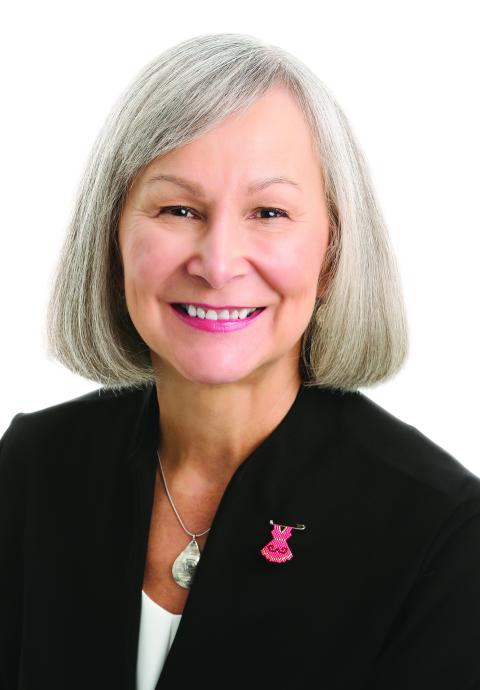
Marion Buller is a member of the Mistawasis Cree First Nation in Saskatchewan. She was the first Indigenous woman appointed as a judge in BC and in 2016, she was appointed as Chief Commissioner for the National Inquiry into Missing and Murdered Indigenous Women and Girls. During her mandate from 2016-2019, Marion Buller created a hearing process based in Indigenous ceremonies and traditions, empowering witnesses to share their painful truths. She led the inquiry to a successful conclusion and release of a nationally and internationally lauded final report.
While working as a Provincial Court Judge in Metro Vancouver, she was instrumental in establishing the First Nations Courts of British Columbia in 2006 and the Aboriginal Family Healing Court in 2016. These courts were where community members, Elders, offenders and victims work together with the judge to help the offenders heal while still being held accountable and responsible for their actions.
Buller served as both Director and President of the Indigenous Bar Association and served as Director of the B.C. Law Court Society, B.C. Law Foundation, B.C. Police Commission and the B.C. Mediators Roster. She also was the Commission Counsel for the Caribou-Chilcotin Justice Inquiry and published reports and articles dealing with Aboriginal rights and legal services for First Nations in BC. Prior to being appointed to the Provincial Court bench, Judge Buller worked as a civil and criminal lawyer. Buller has lectured and written numerous articles and papers about aboriginal law, criminal law, family law and human rights.
Mary Point
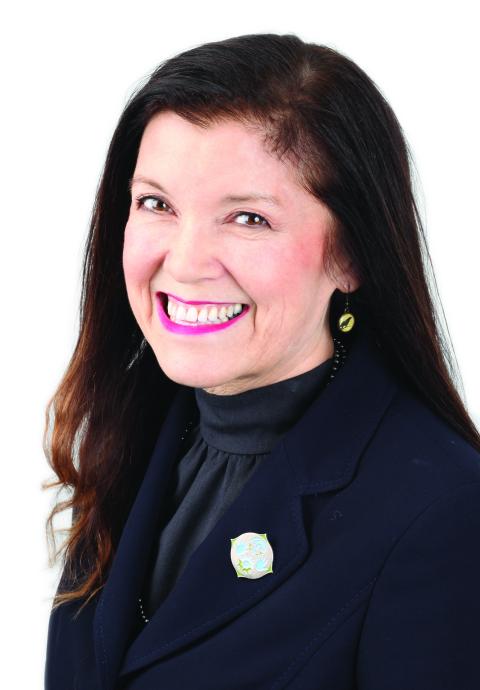
Mary is a proud member of the Musqueam Indian Band who is leading and overseeing the ground-breaking YVR-Musqueam Friendship and Sustainability Agreement. The agreement includes scholarships, new jobs, revenue sharing, protection of archaeological resources and opportunities for Musqueam Band members. Since the signing, more than 150 applicants representing more than 10% of Musqueam have sought employment at the airport and 90 individuals have accepted employment.
In her previous role as Musqueam’s Community Planner, she worked with a team to produce an award-winning Comprehensive Sustainable Community Development Plan that provides the path and vision for Musqueam to be a self-governing and self-sustaining Nation.
During Musqueam’s direct action to protect the open graves of ancestors under the Arthur Laing Bridge, Mary was one of the first to act, inspire and mobilize others to protect the ancestors and Musqueam sacred space, while building historical awareness into the broader Vancouver narrative.
Dr. Nadine Rena Caron
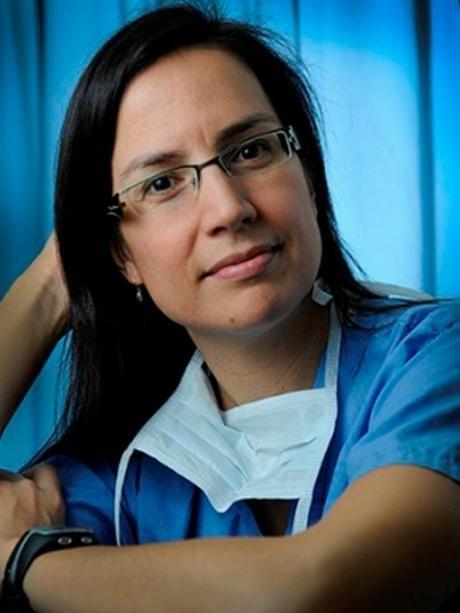
Photo credit: Flickr/ SFU - Communications & Marketing
Nadine Rena Caron FACS, FRCSC, is the first Canadian Indigenous women general surgeon. Caron was born and raised in Kamloops, British Columbia, to an Ojibwe mother and an Italian immigrant father.
Caron completed her Bachelor of Science in Kinesiology at Simon Fraser University (1993) and her Medical Degree (1997) at the University of British Columbia in Vancouver. As the first female First Nations student to graduate from the University of British Columbia’s medical school, she won the Hamber Gold Medal as the top graduating student and was named one of Maclean’s “One Hundred Canadians to Watch.” During her surgical residency, Caron completed her Masters of Public Health (2001) from Harvard University and after completion of residency training (2003), moved to San Francisco to complete her Postgraduate Fellowship Training in Endocrine Surgical Oncology at the University of California, San Francisco (2004).
Nadine’s main research focus involves access to equal health status, health care services and the research that leads to these for our marginalized populations – including Aboriginal, northern and rural. She is currently a member of the Michael Smith Foundation for Health Research Board of Directors, the Governing Council of the Canadian Institutes of Health Research, Regional Advisory Committee for the Terry Fox Research Institute (BC Node), the BCCA Surgical Oncology Network and member of the Northern Aboriginal Cancer Care Advisory Committee. As well, Nadine is the interim Director for UBC’s Centre for Excellence in Indigenous Health which aims to be a focal point for collaboration involving UBC students/faculty and community in partnerships to optimize health science curriculum, education, student supports and health research through an Indigenous lens.
Nadine has also been a part of multiple presentations nationally and internationally on Indigenous health, cancer care in rural and northern populations, and addressing the inequities – both known and suspected – for Canada’s marginalized populations.
Rhiannon Bennett
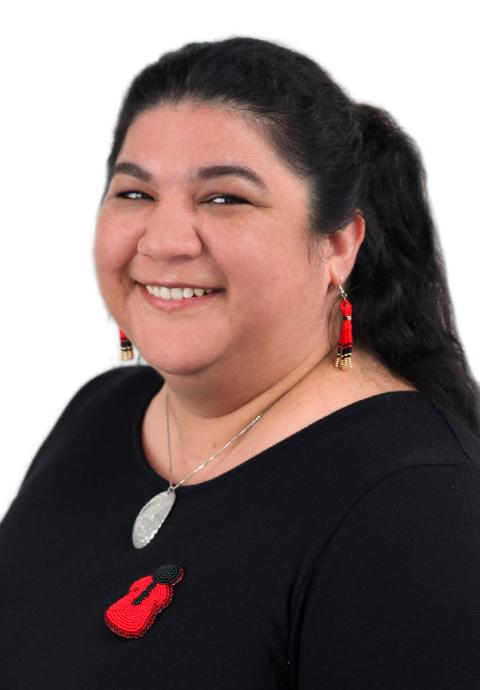
Rhiannon is Musqueam and the CEO of Hummingbirds Rising, helping non-Indigenous Canadians develop the skills, compassions and abilities to recognize and change systems and practices needed to play an active and meaningful part in decolonization.
After years of frustration with poor policies and funding cuts, Rhiannon was led to become more politically active. In 2014, she was the first Indigenous person elected to the Delta Board of Education. As a Delta School Board Trustee, Rhiannon focused on repairing and building stronger relationships with education partners. She was appointed to the B.C. School Trustees Association’s Indigenous Education Committee and was named co-chair of the committee until the end of her term.
She was a founding member of Feminists Deliver, holding the international Women Deliver conference accountable for arriving in BC and ignoring issues that pertain to local women and children and its connections to the global disparities that women and children face. Rhiannon was the first Indigenous woman elected to the Delta Board of Education is on the Kwantlen Polytechnic University’s Board of Governors and is a core member of Delta’s Organizing Against Racism and Hate Committee. Rhiannon was recognized by Musqueam Leadership for her work on Canoe Revitalization in community.
Dr. Sheryl Lightfoot
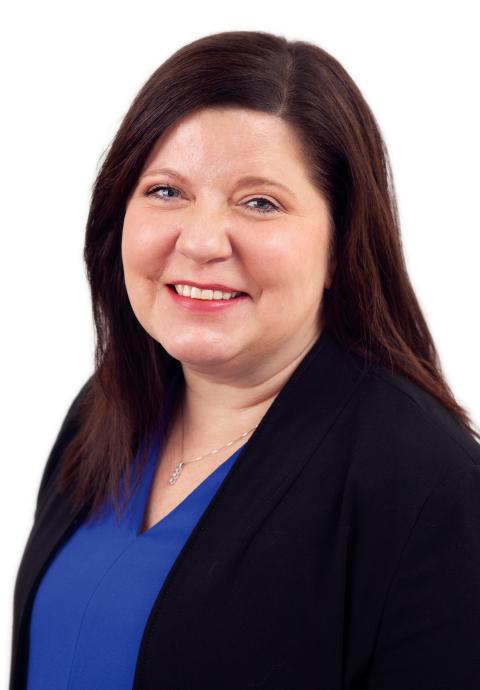
Sheryl is Anishinaabe and a citizen of the Lake Superior Band of Ojibwe. She is UBC’s Senior Advisor to the President on Indigenous Affairs where she co-led the creation and implementation of the UBC 2020 Indigenous Strategic Plan. This is the first post-secondary Indigenous framework in North America to take a human-rights based approach to its work and the first university-based Indigenous strategic framework in the world to use the UN Declaration on the Rights of Indigenous Peoples as its foundation.
Dr. Lightfoot also lead advisor on UBC’s negotiations with the Musqueam on a new Memorandum of Affiliation to further the sharing of knowledge and the advancement of Musqueam and Indigenous youth and adults in post-secondary education.
Sheryl is Canada Research Chair in Global Indigenous Rights and Politics and is one of the world’s experts in global Indigenous politics.
Swelchalot Shirley Hardman
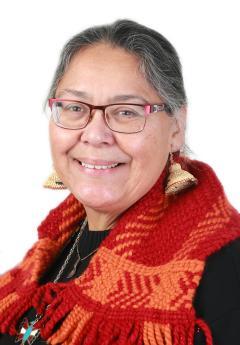
Swelchalot is a member of the Shxwhá:y Village, Sixties Scoop Survivor and Senior Advisor on Indigenous Affairs at the University of the Fraser Valley (UFV), where she has guided the UFV’s Indigenization and Reconciliation work for the last two decades.
Swelchalot brought Halq’emeylem language credited classes to UFV, facilitated the development of an Aboriginal Culture and Language support diploma for Aboriginal support workers in the school system, facilitated the development of the Honouring Our Gifts certificate - a visual arts credential in carving and helped create the Lens of Empowerment project - a program where students work with photography and video production to examine topics related to women and identity in Stó:lō territory.
Swelchalot is currently turning her experience as a leader of Indigenization into doctoral research at UBC.
Tania Willard
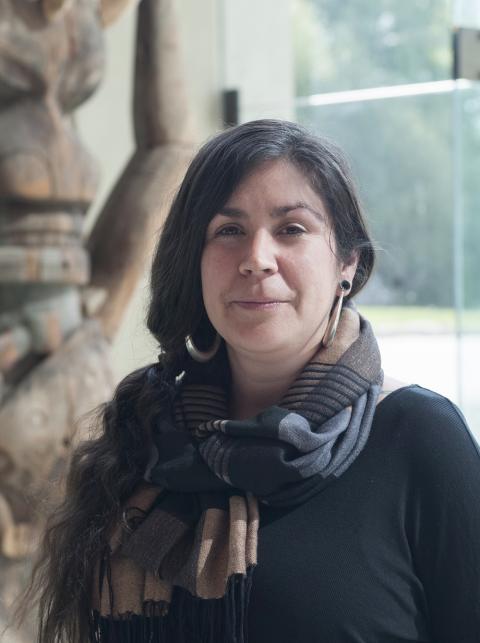
Photo credit: Kyla Bailey
Tania Willard, Secwepemc Nation and settler heritage, is recognized for her outstanding achievement and commitment in her art practice. She works within the shifting ideas around contemporary and traditional it relates to cultural arts and production, often working with bodies of knowledge and skills that are conceptually linked to her interest in intersections between Indigenous and other cultures.
"Interconnectedness is the root system of my work as an artist. Land based art, community engaged practice, printmaking, painting are the mediums I most often work in, these ways of working are tied to me, I am tied to my ancestors, we are tied to the land." -Tania Willard
Willard’s curatorial work includes the touring exhibition, Beat Nation: Art Hip Hop and Aboriginal Culture (2012-2014), co-curated with Kathleen Ritter. In 2016 Willard received the Award for Curatorial Excellence in Contemporary Art from the Hanatyshyn Foundation as well as a City of Vancouver Book Award for the catalogue for the MOA exhibition, Unceded Territories: Lawrence Paul Yuxweluptun. Willard’s artistic projects have been exhibited widely and collections of her work include the Vancouver Art Gallery, Kamloops Art Gallery, Burnaby Art Gallery and more.
As assistant professor in Creative Studies at UBCO (Kelowna BC) currently her research focuses on Secwepemc aesthetics/language/land and interrelated Indigenous art practices. Willard’s projects include BUSH gallery, a conceptual space for land-based art and action led by Indigenous artists.
Tracy Antoine
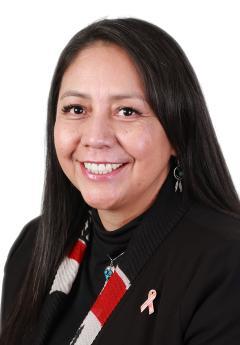
Tracy is Vice President Indigenous Markets, BC Region at Royal Bank of Canada, a role that was tailor-made to ensure her skills and expertise were utilized to advance RBC’s Indigenous Market policies and Reconciliation in Action initiatives.
Tracy is from Sťuxtéws, in the Secwepemc Territory; she initiated and implemented home equity financing policies to better serve Indigenous clients for on-reserve housing, making home ownership more accessible to people in Indigenous communities. This initiative evolved into policies to further support Indigenous clients, leading directly to employment opportunities and sustained economic development for Indigenous communities across BC. Working with Indigenous youth and the Ministry of Children and Family Development, Tracy re-imagined a way to help young people safely set up personal banking. Tracy is also a matriarch, a mother and doctoral candidate.
